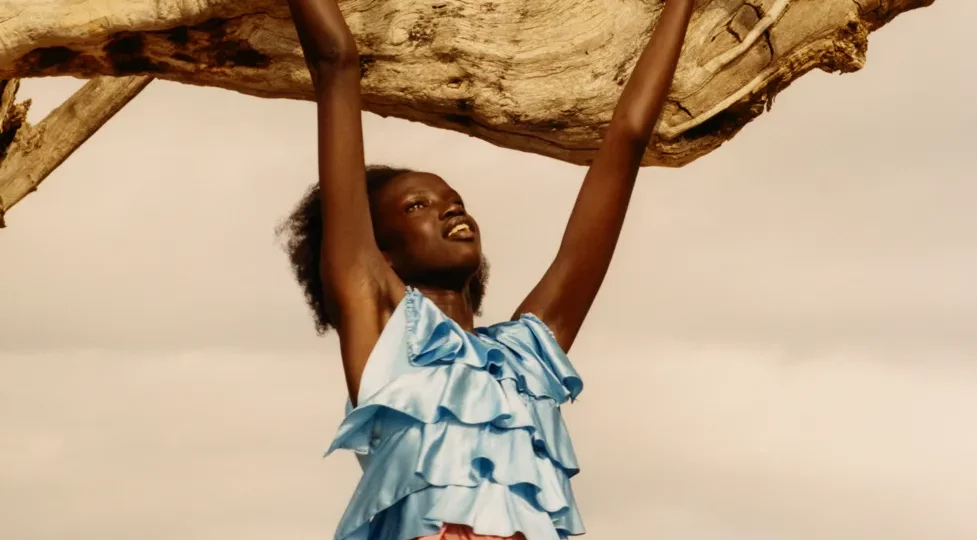While the conversation around sustainability in fashion has grown in recent years, progress remains slow. In fact, a recent study by Stand.Earth found that only one of 10 major brands it looked at – all of which have signed up to the United Nations Fashion Industry Charter for Climate Action – was on track to cut greenhouse gas emissions by 55 per cent by 2030 and keep in line with the Paris Agreement’s 1.5C limit.
The need for greater accountability from brands, then, is likely to be a strong focus next year. Addressing the issue of greenwashing will be key, as a raft of new legislation looks to crackdown on brands that are overstating or not telling the full truth about the eco-credentials of their products. Meanwhile, the 10-year anniversary of the devastating Rana Plaza collapse, when 1,134 people died following the collapse of a garment factory complex in Dhaka, Bangladesh, will see a renewed focus on the need for greater protection for garment workers.
Below, see six ways the fashion industry could become more sustainable in 2023.
Retailers embracing rental
In recent years, we’ve seen a number of major retailers integrating resale onto their websites, as the demand for second-hand has grown. Now, it’s the turn of rental, with the likes of Selfridges, MatchesFashion and Harrods all now offering customers the opportunity to loan luxury pieces. Expect to see the trend continue, as companies explore more circular business models going forward. “I think five years from now every serious brand, and definitely every multi-brand retailer, will have rental [fashion] within their offering,” Victoria Prew, CEO and co-founder of rental platform Hurr, says in British Vogue’s January 2023 issue.
Recycling technologies scaling up
Recycling has long been a sticking point for the fashion industry, as less than one per cent of garments is currently turned into new clothes again. A number of innovators have been working to change that – including Swedish company Renewcell, via its recycled fibre Circulose that’s made from 100 per cent textile waste. “In 2023, I hope we’ll see the fruits of brands’ investment into recycled cellulosic fibres start to reach the consumer market in earnest,” George Harding-Rolls, campaigns manager at Changing Markets Foundation, comments. “There are small but sure signs that fashion’s much fêted circularity ambitions are starting to be stitched together.”
Moving towards regenerative materials
As well as reusing textiles that already exist, a growing number of brands are also looking to adopt more regenerative fibres – materials that are produced in a way that’s beneficial for ecosystems and improves biodiversity. Stella McCartney, for example, introduced regenerative cotton for the first time in her spring/summer 2023 collection . “In 2022, we saw some increased interest in regenerative agriculture,” Ashley Gill, Textile Exchange’s chief strategy officer, says. “There has been more connection and collaboration along the supply chain, and bigger commitments to biodiversity. We now need to move towards scaling these solutions, making them the new normal.”
A greenwashing crackdown
Over the past year, we’ve seen a tougher stance on greenwashing, with the Netherlands’ Authority For Consumer Markets cracking down on general terms such as “ecodesign” and “conscious”. Meanwhile, the Norway Consumer Markets Authority found that data used by H&M and Norrøna from the Higg Materials Sustainability Index could “easily be considered misleading” (the Sustainable Apparel Coalition, which is behind the Index, responded in a statement saying it was working with a regulator “to better understand how to substantiate product level claims with trusted and credible data”).
It’s a trend that’s set to continue into the new year. “The European Union’s delayed legislative proposal on green claims will come out in early 2023, the [UK’s] Consumer Market Authority’s investigation into fashion brands should conclude, and we’re likely to see more actions like the cases brought by the Dutch and Norwegian authorities against fashion brands,” Harding-Rolls says.
Stronger protection for garment workers
There’s been a push for stronger protections for garment workers within the industry – as evidenced by the Garment Worker Protection Act in California that officially came into effect at the start of 2022. Since then, the European Union has unveiled its proposed human rights due diligence legislation, which would require businesses to address human rights issues across their supply chains, while the proposed Fashioning Accountability and Building Real Institutional Change (FABRIC) Act would offer greater protections for nearly 100,000 garment workers in the US.
Meanwhile, the International Accord for Health and Safety, a legally-binding contract between brands and trade unions to ensure safe working conditions that was originally implemented after the Rana Plaza disaster, has now been extended beyond Bangladesh to Pakistan. “We know that thousands of workers are [now] safer thanks to the Accord in Bangladesh,” Ayesha Barenblat, founder and CEO of Remake, comments. “With the programme now headed to Pakistan, the unions and labour rights community are looking to leadership [from brands] in extending similar safety for Pakistani workers.”
Addressing the supply chain
While fashion is a major contributor to global greenhouse gas emissions, climate change itself is also having an impact on the industry’s supply chain – ranging from extreme drought in Texas to the devastating floods across Pakistan. “The industry needs companies to transform the way they work with their supply chain to create production systems that are in balance with nature, preserving and positively benefiting not only ecosystems, but [local] communities and individuals,” Gill says.









